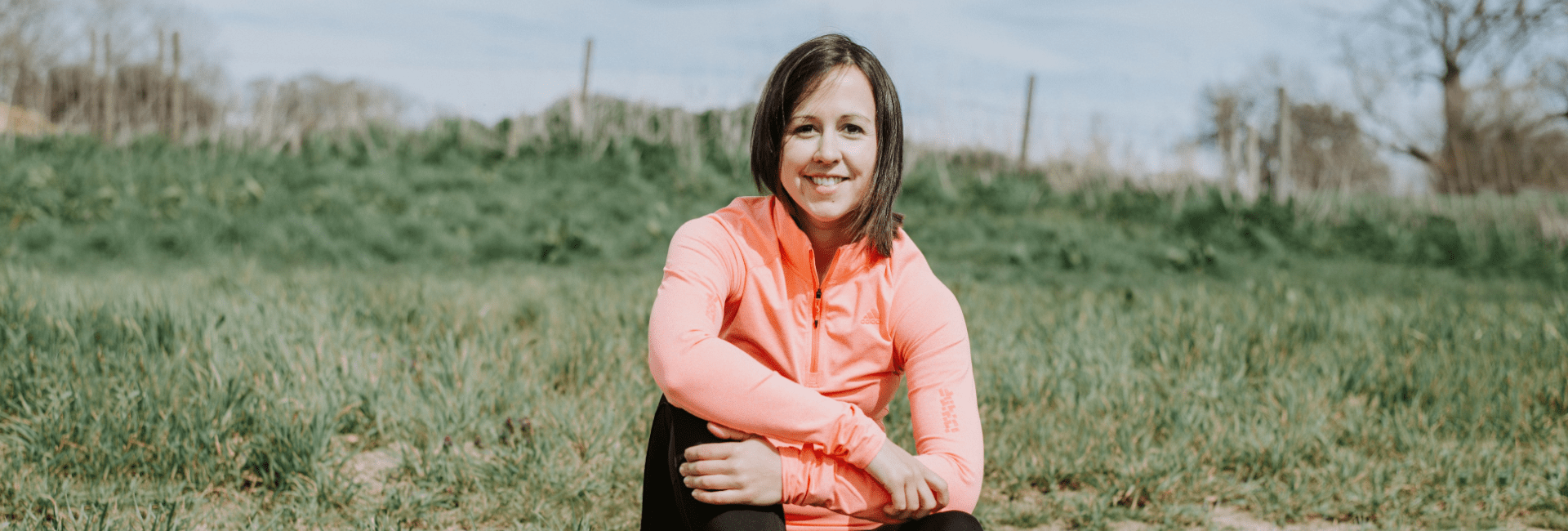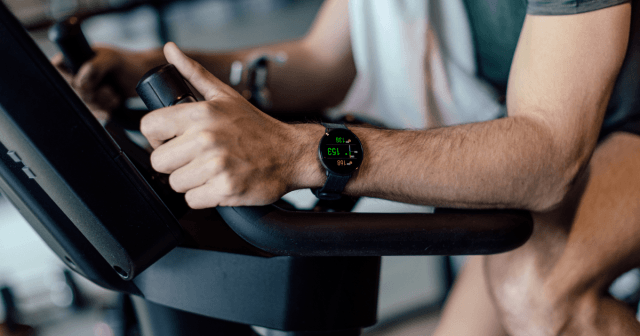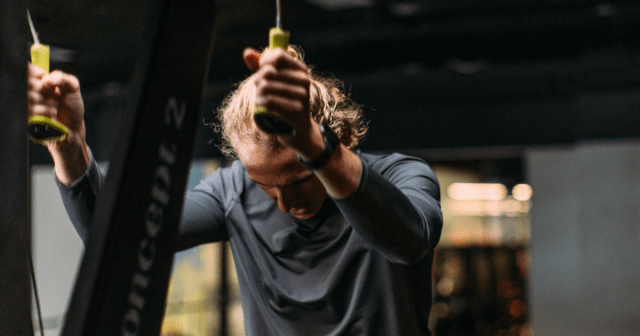Our bodies go through many transitions during our lives. Puberty is the one we all know, where swirling hormones transform the way we both look and feel. Yet, the changes don’t stop there.
For women, menopause is another transitional time in our lives – a second puberty of sorts, where our bodies prepare us for the later stages of life. Yet, there is considerably less awareness of menopause than puberty, which means that the changes often take some women by complete surprise.
Menopause itself is signified by a single day: the first anniversary of a woman’s last menstrual cycle, officially indicating that she has reached a new stage in her life. For most women, this occurs somewhere between 45-55. However, some go through it earlier and later than this.
Perimenopause is the transitional time that leads up to menopause, sometimes beginning from eight to 10 years before a woman stops menstruating. The most commonly known menopause symptoms, such as hot flushes, mood changes, and weight gain (plus a range of other experiences), actually occur during perimenopause, significantly impacting a woman’s physical and mental health.
So, how does changing your approach to diet and exercise help during perimenopause? We caught up with women’s coach and podcaster, Hayley Plummer about how you can transform your fitness and nutrition to feel both happier and healthier during this transitional stage of life.
Hi Hayley! How did you get into coaching women?
I’ve always loved food and thankfully also enjoyed being active. So a career that involved helping people improve their health and fitness and (as a result) gain energy, strength, and confidence seemed perfect.
I enrolled in a personal training course and absolutely loved it. Over the years, many of my clients ended up being women around the perimenopause stage of life. So, I began to do deeper studies into what they need – the specifics around nutrition, exercise, habits, and mindset that really make a difference in this phase of life.
What type of focus does your coaching have?

My coaching is geared towards helping women reach their goals with a balanced and sustainable approach while building a healthy relationship with food (and themselves) along the way.
I often work with women who have spent years, if not decades, in the cycle of losing weight on a restrictive diet and then regaining it. Their confidence is low, and they often feel they need to cut certain foods in order to lose weight. This approach usually leads to short-term progress, followed by ‘falling off the wagon’ and ending up back at square one.
Through my coaching, we move away from the idea of ‘good’ and ‘bad’ foods and instead focus on nourishing the body with mostly great nutrition while still thoroughly enjoying foods they love. And we work on building empowering habits around exercise – mainly general daily movement, strength training, and anything else they like to do.
What are some of the most common early signs of perimenopause?
Every woman’s experience is different, but common early signs are hot flushes, night sweats, vaginal dryness, and difficulty sleeping. Women may also experience low mood, anxiety, reduced sex drive, and problems with memory and concentration. Fun right?
It’s essential to know these symptoms because we can do things to help and improve them. Diet, exercise, and lifestyle can have a significant impact.
Are women often surprised by these sudden changes in their physical and mental health?
Yes. The average age of menopause is 51, but symptoms can start years before this. We often think of menopause as mainly being hot flushes – but as I mentioned above, many other symptoms can take women by surprise.
This phase of life is often very busy with work and family commitments, so signs of menopause (such as anxiety, low mood, low energy, and trouble sleeping) can end up being dismissed as ‘life stress.’ It’s a two-way street, as life stress can also exacerbate menopause symptoms.
How much effect do diet and exercise have on someone who is perimenopausal?
It can have a huge impact.
Through the right nutrition and exercise, you can improve your energy levels, sleep, mental health, and bone density, as well as reducing muscle loss and keeping your body strong.
Through the right nutrition and exercise, you can improve your energy levels, sleep, mental health, and bone density, as well as reducing muscle loss and keeping your body strong.
You can also reduce perimenopause symptoms such as hot flushes and anxiety. However, it’s important to note that sometimes more support is needed, and HRT can make the most significant difference.
Many women find that as estrogen levels fall in perimenopause, the body starts preferentially storing fat around the stomach. Changes to diet and doing the right exercise can reduce this and support weight loss efforts.
In terms of positively impacting our physical and mental health, it’s incredible the difference that diet and exercise can make.
What are some key ways women should change their approach to exercise during perimenopause?
Many women feel like they need to do a lot of cardio to be healthy and lose weight, but during perimenopause, this often adds stress to the body when it’s already got a lot going on.
Three highly effective forms of exercise in this phase of life are:
1) Strength training: prevents muscle loss, improves fat loss, keeps you and your body strong, and can be an incredible boost to both physical and mental health.
2) Interval training: involves short bursts of high-intensity effort and comes in various forms. A good template to follow is 20-60 seconds of hard effort, followed by 30-120 seconds going slow to recover, repeated for 5-10 repetitions. You could do this on a bike, rowing machine, treadmill, or outside running or power walking up a hill. The whole session can be done in less than 25 minutes and can be a brilliant boost to your fitness and heart health.
3) Walking: a great way to keep your activity up without adding stress to the body. Going for a walk in nature has been shown to improve mental health, and being outside in daylight can lead to a better night’s sleep.
We should also incorporate exercise where the body is taking impact through the joints, such as hiking, dancing, running, boxing, skipping, and sports such as tennis. This type of exercise helps keep our bones strong and protects against osteoporosis.
From around the age of 30, we gradually begin to lose both muscle mass and bone density. Then when we reach menopause, we lose the protective effects of estrogen and can lose muscle and bone at a faster rate.
Why is resistance training so vital for women at this stage of life?
From around the age of 30, we gradually begin to lose both muscle mass and bone density. Then when we reach menopause, we lose the protective effects of estrogen and can lose muscle and bone at a faster rate. This depletion leads to a slower metabolism (making it more difficult to lose weight), loss of strength, and an increased likelihood of falls and fractures as we get older.
You can encourage the body to keep hold of muscle by doing resistance training, which has so many benefits:
- Your body is stronger.
- Your metabolism is higher (making it easier to burn fat).
- You feel toned and more confident in clothes.
- You’re likely to have fewer aches and pains and give yourself the best chance of a long active life running around after grandchildren.
When muscles get worked through resistance training, they pull on the bones, which causes them to become stronger, reducing your risk of osteoporosis.
What should a healthy diet include during perimenopause?
The best diet is one you can stick to, so it’s important to still include foods you love. Keep note of how your body responds so you can build a diet that’s best for you.
Here are some good food groups to consider including:
- Protein: one of the critical things to focus on is eating enough protein, as it will keep blood sugar levels more stable, reduce hunger and cravings, and help your body maintain muscle. 90-130 grams of protein per day is a good range for most women to aim. Some good sources are meat, fish, Greek yogurt, eggs, cottage cheese, tofu, tempeh, lentils, and whey protein. In visual terms, a palm-size serving at each meal works well.
- Healthy fats: eating these supports our energy and hormonal health, such as oily fish, avocado, olive oil, eggs, nuts, and seeds. 1-3 servings per day are ideal.
- Fruits and vegetables: adding color to your day with different vegetables and fruits provides your body with vitamins, minerals, antioxidants, and fiber, which support your immune system, reduce signs of aging, and improve gut health. Filling half your plate with vegetables at dinner is helpful for health and weight loss.
- Carbohydrates: these are good too – we need them for energy. These can be dropped from one or two meals if you’re having a less active day, but don’t cut them completely. Carbs before or after exercise (depending on your preference and when you’re exercising) help replenish your body’s energy stores. And carbs in your last meal of the day, along with a source of protein, can improve your sleep. The carbohydrates that provide the most benefits are the more natural ones – potatoes, sweet potatoes, beans, lentils, rice, oats, wholegrains. Limiting processed foods and added sugars can improve energy and help reduce hot flushes.
Do you have any additional advice for women just starting on their perimenopause journey?
Yes. It’s so important to start where you’re at and focus on small sustainable changes rather than trying to do everything all at once. We all have days or weeks where things don’t go to plan, and that’s ok – you’re only ever one great choice away from being back on track. Consistency will always beat perfection.
Consistency will always beat perfection.
Being kind to yourself and celebrating all the wins and signs of progress along the way (no matter how small they seem) will really help boost your motivation to keep going. If you need a little inspiration, sign-up for my free menopause guide and join my community on Facebook and Instagram.
If you liked this post, don’t forget to share so that others can find it, too.
Or give it a thumbs up!
I like this article
Please note that the information provided in the Polar Blog articles cannot replace individual advice from health professionals. Please consult your physician before starting a new fitness program.





